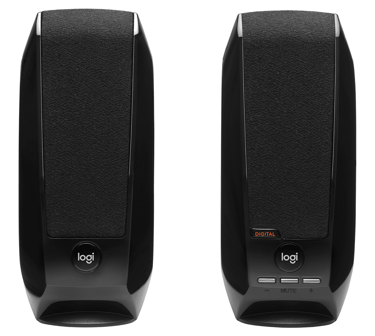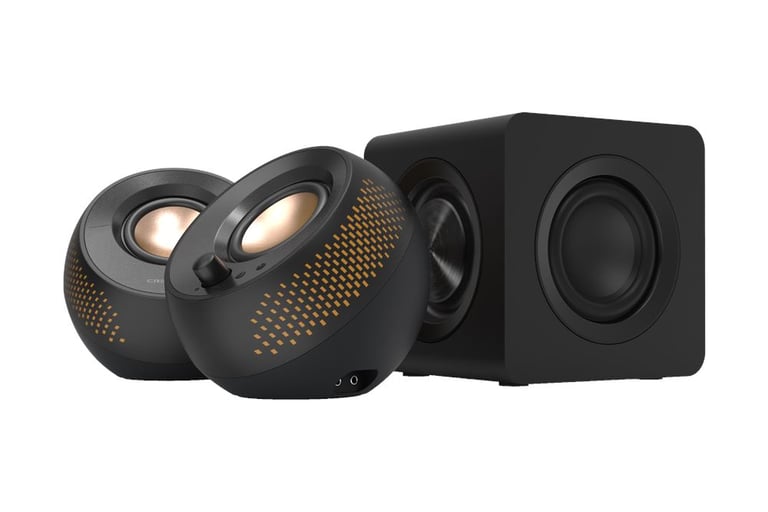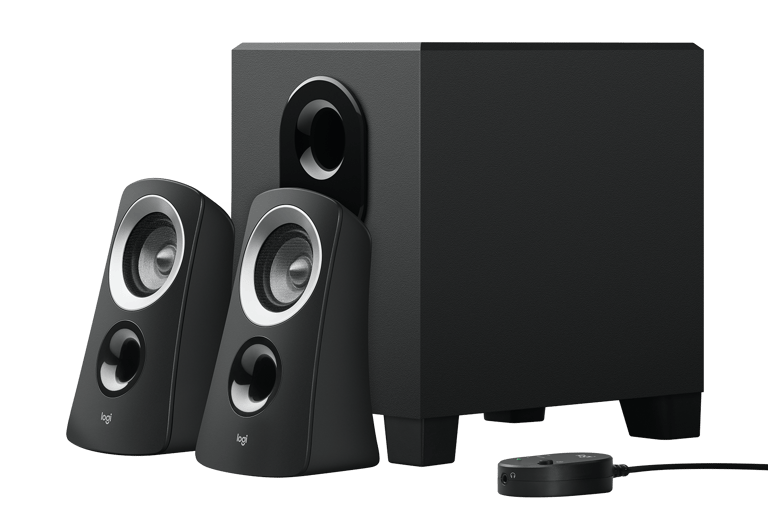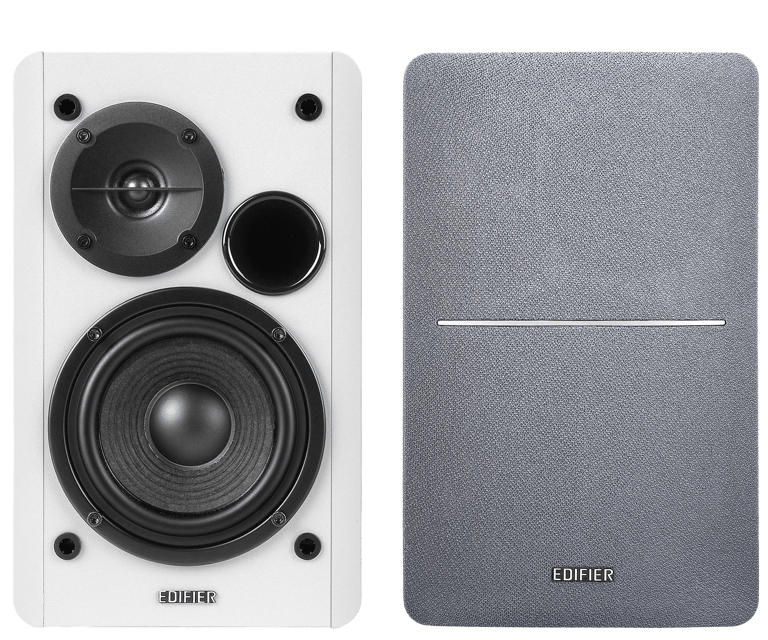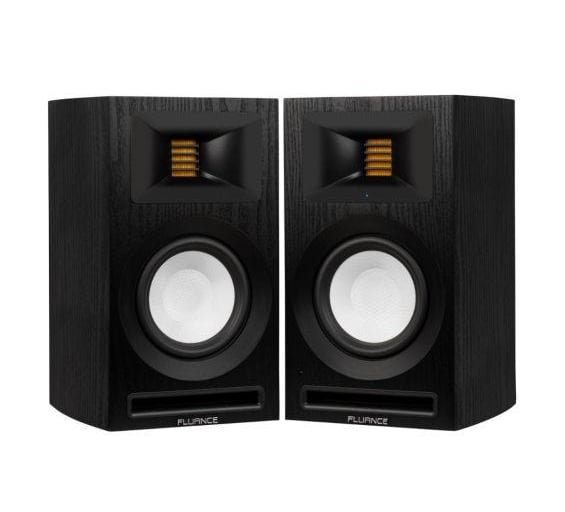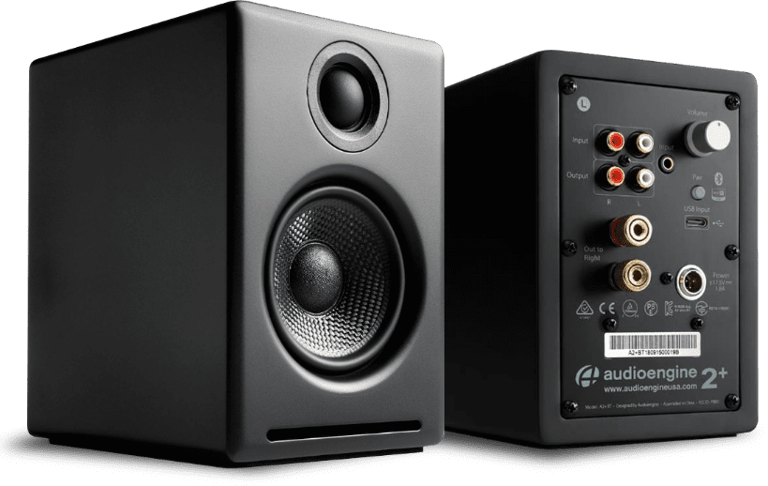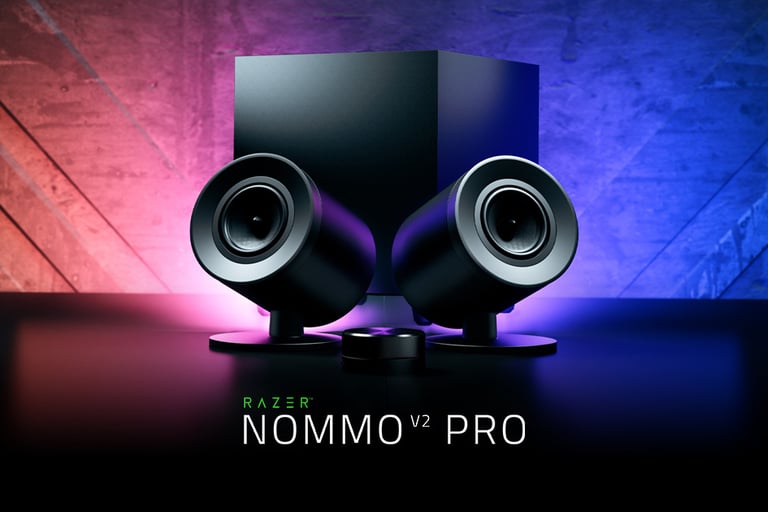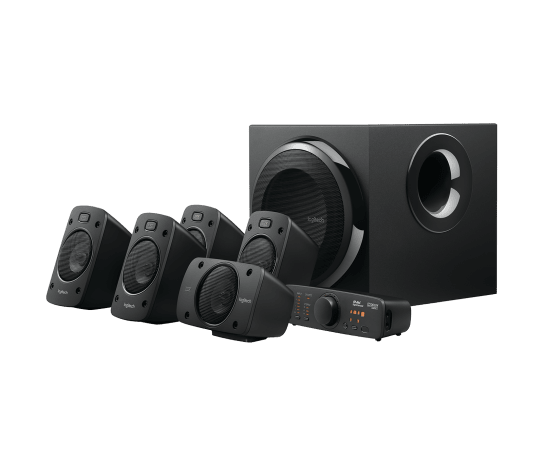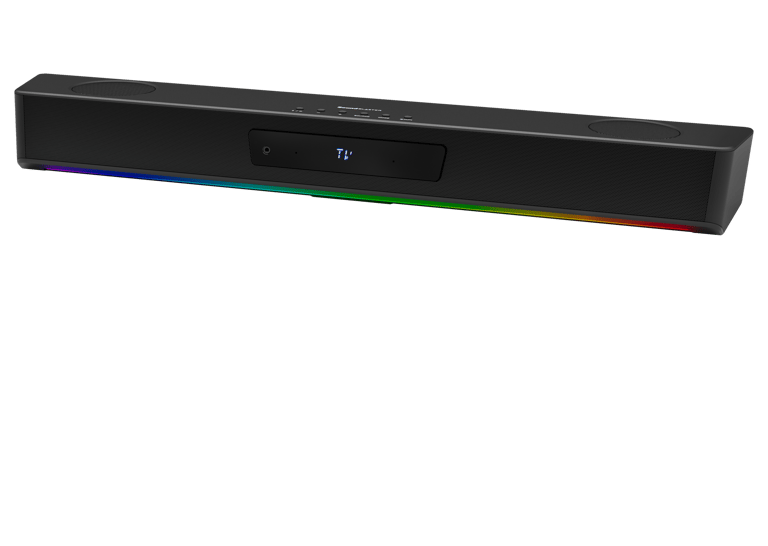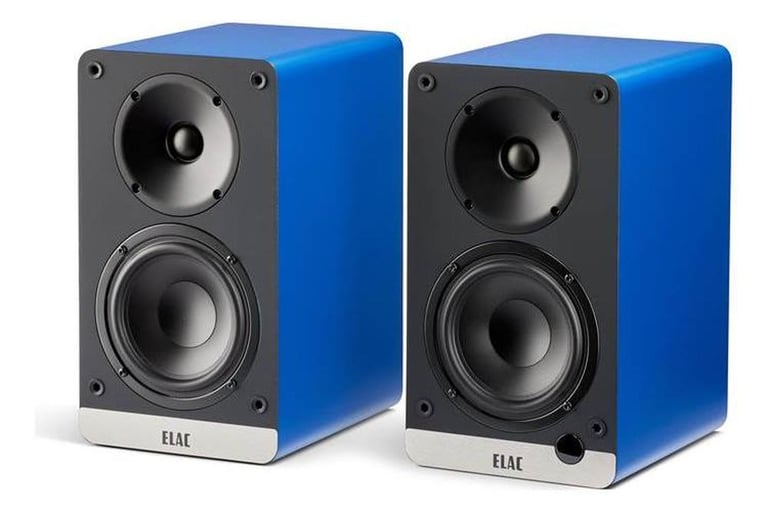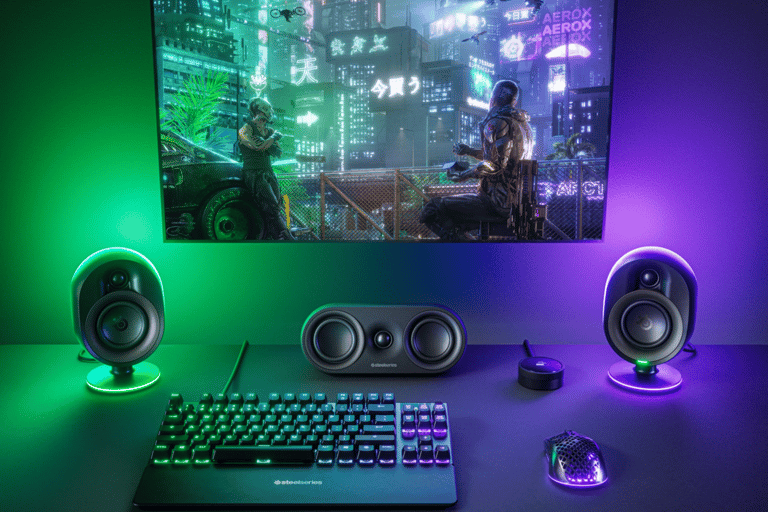Best PC Speakers 2025: Top Picks & Buying Tips
Discover the best PC speakers of 2025, including top 2.0, 2.1, soundbars, and studio monitors for gamers, streamers, and audiophiles. Get essential buying tips, price ranges, and expert recommendations to enhance your audio experience.
10/7/202513 min read
The Best PC Speakers for Every Budget and Setup in 2025
When you purchase through links on our site, we may earn an affiliate commission. Learn More
By Epic Loot Links Updated Oct 8, 2025 at 3:34 pm
Why Desktop Audio Matters in 2025
The modern desktop has become a hub for work, play, content creation, and immersive entertainment. As remote and hybrid work remain prevalent and PC gaming continues its forward march, speakers have evolved from being mere afterthoughts to essential components of any setup. Even the best monitors and laptops struggle to deliver audio clarity, punch, and nuance, making external speakers one of the smartest upgrades you can give your system. In 2025, the market offers a dizzying variety of options—ranging from ultra-affordable USB models to sophisticated audiophile-grade monitors, space-saving soundbars, and surround systems that transform your desk into a home theater.
In this definitive guide, we curate the best PC speakers and speaker systems available this year. We break down options across price categories—from budget models under $50, versatile midrange choices under $150, to premium and audiophile-grade setups. We also feature special picks for gaming, professional monitoring, and portable use, all while highlighting differences in design, connectivity, PC compatibility, and value1.
Before exploring individual models in depth, we’ll present a comprehensive comparison table summarizing key technical details and use cases, enabling you to quickly identify which speakers best fit your needs.
Budget PC Speakers: Top Performers Under $50
Creative Pebble 2.0 / V3 / Pebble Pro Amazon.ca
Creative’s Pebble lineup, particularly the Pebble 2.0 (and its V2, V3, and Pro variants), dominates the budget category thanks to a rare mix of affordability, build quality, and sound. The Pebble 2.0, retailing under $30, delivers clear audio with its 4.4W RMS output, USB-powered convenience, and unique spherical design with 45° elevated drivers23. The rear-facing passive radiators add surprising fullness to the sound, helping dialogue and music in gaming or streaming stand out. The Pebble Pro, typically around $60–$80, steps up the game with 10–30W output (depending on USB-C PD power), RGB lighting, Bluetooth 5.3, and both 3.5mm analog and USB-C support4. The addition of customizable lighting and higher output widens their appeal to gaming and style-conscious users.
Pros:
Outstanding value and clarity for price.
Plug-and-play; no drivers needed.
Compact footprint fits minimalist and portable setups.
Latest models offer USB-C, Bluetooth 5.3, RGB.
Cons:
Low-end response is limited (especially v2/v3).
No subwoofer/sub out (Pro has none).
Some report the volume knob can cause the speaker to tilt.
PC Compatibility: Ideal for laptops, small desks, and budget desktops. All operating systems supported; V3 and Pro support both wired and Bluetooth input.
Logitech S150 / S120
Amazon.ca
The Logitech S150 ($14) and S120 ($10) are true “no frills” classics, offering clear vocals and basic stereo imaging for office work, podcasts, and video conferencing. With USB power and audio delivered over a single cable, these speakers win with convenience and reliability3. Expect basic sound and almost no bass, but more than adequate for mainstream use.
Pros:
Plug-and-play simplicity.
Ultralight, widely available.
Ideal for true budget installations or office swapping.
Cons:
No bass impact.
No Bluetooth; only USB or 3.5mm.
PC Compatibility: Universally plug-and-play across all PCs and laptops.
Other Solid Budget Picks
Sanyun SW102: Stylish and compact, offers 360° sound and decent bass for USB-powered gear.
LDAS A8: Noted for design, universal USB-A/C, and a strong stereo experience under $253.
Nylavee RGB: For those seeking RGB at under $40 with touch light controls and a compact soundbar form.
All these options lift audio quality over built-in laptop/monitor speakers, supporting plug-and-play for Windows, macOS, and Linux2.
Mid-Range PC Speakers: Best Value Under $150
Creative Pebble Plus
Amazon.ca
The Creative Pebble Plus offers an outstanding entry-level 2.1 system, retaining the compact pebble satellites while adding a dedicated 4-inch down-firing subwoofer. For around $50, you get beefed-up bass, making this a popular pick for students and anyone who wants extra punch in a small setup56. Powered by USB and connected via 3.5mm, the system is easy to set up and keeps cable clutter minimal.
Pros:
Subwoofer increases bass.
Small satellite speakers fit tight desks.
Affordable price for 2.1.
Cons:
Bass can be weak at standard power, stronger in "high gain" mode requiring 5V/2A adapter.
Cables can tangle in cluttered spaces.
PC Compatibility: Desktop and laptop, USB and analog 3.5mm power and input.
Logitech Z313 / Z407
Amazon.ca
The Logitech Z313 is a budget-friendly 2.1 option, widely praised for its ease of use, palm-sized wired control pod, and a bass-rich compact subwoofer27. Slightly more advanced, the Z407 ($100-115) upgrades to Bluetooth and a wireless volume controller, offering versatile connectivity and a sleeker satellite/sub design. Both provide significant audio upgrades for gaming, music, and streaming.
Pros (Z313/Z407):
Balanced, distortion-free sound.
Easy wired/wireless controls.
Z407: Bluetooth and USB input, wireless volume control.
Cons:
Sub can be overwhelming at high volumes.
Short cables limit placement options.
PC Compatibility: Universal 3.5mm and USB, plus Bluetooth for Z407. Fits gaming rigs, desktops, and most laptops.
Edifier R1280T / R1280DB
Amazon.ca
Entering the powered "bookshelf" class, Edifier’s R1280T and R1280DB combine wooden enclosures, remote controls, and richer bass/midrange. Connectivity includes RCA for analog gear, with the R1280DB adding Bluetooth for wireless streaming and an optical input suited for TV/console use8. These are great for music, movies, and desk setups where sound and design matter.
Pros:
Warm, natural tone and more accurate sound than cheap plastic speakers.
Remote and tone control for easy adjustments.
Build quality above the price point.
Cons:
Better for small/medium rooms.
Remote batteries are expensive.
PC Compatibility: Desktops, laptops, and consoles. Bluetooth on R1280DB expands device options.
Premium and Audiophile-Grade PC Speakers
Fluance Ri71
Amazon.ca
The Fluance Ri71 is a standout among powered desktop "mini-monitors," boasting a glass fiber woofer and AMT tweeter, front-facing bass ports, and a cabinet that rivals audiophile brands. With HDMI ARC (for TV/entertainment), stereo RCA, and aptX HD Bluetooth connectivity, it bridges PC, console, and modern television setups91011. It pushes 120W, offers remote bass/treble adjustment, and delivers deep, detailed sound with a wide stereo image.
Pros:
Hi-res audio, deep bass, and wide soundstage.
Modern, attractive build (walnut, black, or white).
HDMI ARC for home theater integration.
Cons:
No USB or optical input.
Control is mostly via included IR remote.
PC Compatibility: RCA or Bluetooth support any desktop, laptop, or workstation. HDMI ARC is for TVs/consoles.
Audioengine A2+ / A5+ Wireless
Amazon.ca
Audioengine is synonymous with desktop hi-fi—the A2+ (smaller) and A5+ Wireless (larger) models deliver clarity and punch that rival traditional speakers, enhanced by a 24-bit DAC, aptX HD Bluetooth, and high-grade cabinet design9. The A2+ excels on small desks; the A5+ fills medium rooms and enables deeper bass. Both can be paired with a subwoofer for full-range sound.
Pros:
True audiophile sound in a compact footprint.
Multiple input types (USB, RCA, 3.5mm, Bluetooth).
Classic, understated aesthetic.
Cons:
Expensive.
Lacks USB-C on A2+.
A5+ lacks a source knob and has limited remote capabilities.
PC Compatibility: USB and Bluetooth work with most modern devices; RCA/3.5mm for legacy gear.
KEF LSX II LT / Ruark MR1 Mk3 / Elac Debut ConneX DCB41
Amazon.ca
For those seeking true reference or hi-fi desktop audio in 2025, high-end models have grown increasingly “desktop friendly.” KEF’s LSX II LT offers compact speakers with HDMI ARC, USB-C, optical, and Bluetooth; Ruark’s MR1 Mk3 and Elac’s Debut ConneX DCB41 both mix quality build and multiple inputs, including USB and phono for vinyl. These models deliver exceptional musical accuracy—at a price.
Pros:
Professional-grade stereo imaging and detail.
HDMI ARC and network streaming on LSX II LT.
Premium materials.
Cons:
Price ($500–$999+).
May be overkill for smaller desks or casual use.
PC Compatibility: USB-C, Bluetooth, HDMI, and optical cover essentially all modern PC and entertainment connections.
Value and Professional Studio Monitors
PreSonus Eris 3.5: Studio-grade accuracy and compact size at $100–$115, with front controls and acoustic pads.
JBL 104-BT: Pro audio in a small form, Bluetooth streaming for flexible use, perfect for content creators.
Yamaha HS5: Renowned in studios; provides flat, honest reproduction but requires some space.
Pros:
Neutral, detailed sound for critical work.
XLR/TRS for pro audio gear.
Suitable for audio production and reference listening.
Cons:
Less “fun” for casual music/gaming (tuned for accuracy over warmth).
Some require third-party stands/adapters.
PC Compatibility: 3.5mm, RCA, or USB interfaces required for PC use; best for workstations and pro setups.
PC Gaming Speaker Systems: Surround, 2.1, and RGB
SteelSeries Arena 9 (5.1 Surround)
Amazon.ca
For immersive PC gaming, nothing matches a true surround system. The SteelSeries Arena 9 brings 5.1-channel audio with a 6.5-inch subwoofer, wireless rear satellites (for cleaner setups), gamer-friendly RGB, and a feature-rich OLED control pod12. With USB-C, optical, and Bluetooth connectivity, it adapts well to modern desktops.
Pros:
Deep bass, crisp highs, proper surround effect.
Wireless rears and immersive RGB lighting.
Sonar software for parametric EQ and custom profiles.
Cons:
Expensive ($600 range).
Bulky; needs space for all five satellite speakers and subwoofer.
PC Compatibility: Designed for gaming desktops, but also connects to consoles and TVs.
Razer Nommo V2 / Arena 7 (2.1 Gaming Solutions)
Amazon.ca
Razer and SteelSeries each target the gaming audience’s demand for powerful directional audio, virtual surround, and light shows. Razer’s Nommo V2 includes 2.1 (and V2 Pro, up to 7.1 virtualization), robust subwoofer, and rear-projection RGB. Arena 7 is a feature-rich 2.1 with USB, BT, and optical input.
Pros:
Bass-heavy, exciting for action games.
Customizable RGB and easy desktop controls.
Wireless and wired connectivity options.
Cons:
Directionality is great for gaming, but less accurate for music.
Subwoofer is wired to satellites.
PC Compatibility: Gamers’ desktops and laptops, consoles via USB and Bluetooth.
Logitech G560 / Z906 / Z407
Amazon.ca
The Logitech G560 brings 2.1 sound with 7.1 DTS:X Ultra virtual surround and customizable LIGHTSYNC RGB lighting. Its G HUB software offers deep audio and lighting customization for gamers looking to personalize their experience.
For true surround, the Z906 (5.1) provides 500W RMS, THX certification, and support for up to six devices, while the Z407 remains a midrange 2.1 favorite for value and wireless control.
Pros:
G560: Powerful visual/gaming feedback.
Z906: Reliable, strong surround with multiple inputs.
Z407: Bluetooth, USB, and flexible desktop placement.
Cons:
G560: RGB preferences may limit appeal.
Z906: Satellite speakers lack midrange detail.
Z407: Subwoofer lacks tightness at higher levels.
PC Compatibility: Wide support for PC, gaming consoles, and TVs.
Soundbars, Desk-Friendly and Portable Picks
Creative Sound Blaster Katana SE / V2X / BlueAnt Soundblade
Amazon.ca
As soundbars shrink in size and grow in sophistication, models like the Sound Blaster Katana SE/V2X deliver 90–180W peak, with RGB, USB-C, HDMI ARC, and Bluetooth all built-in. They’re designed to fit under monitors and offer Dolby Audio, Super X-Fi virtual surround, and easy wall-mounting options.
BlueAnt’s Soundblade targets users with limited desk space and adds a built-in subwoofer, USB-C and Bluetooth 5.3 ports for a seamless, minimalist setup.
Pros:
Space-saving designs for tight desks.
Wide connectivity for PC, consoles, and TVs.
Controllable via remote or dedicated apps.
Cons:
Bass is usually more modest than with dedicated subwoofers.
Display and app/UI are often basic.
PC Compatibility: Excellent; USB-C and Bluetooth work for mobile/laptop users, HDMI ARC suits home theater.
Design, Build, Connectivity, and Placement: What to Consider
2.0 vs. 2.1 vs. 5.1/7.1 Setups
2.0: Simple stereo, minimal desk footprint, ideal for music/work, sometimes with “pseudo-bass” via enhanced tuning.
2.1: Adds subwoofer for deep bass—best for gaming and cinematic content, still desk-friendly.
5.1/7.1: True surround for dedicated gaming/media rooms; ultimate immersive experience but demands space1213.
Connectivity Types: USB, 3.5mm, Optical, Bluetooth, HDMI ARC
USB: Plug-and-play, often with in-speaker DAC to bypass noisy laptop audio circuits.
3.5mm: Most universal; works with nearly all analog audio sources.
Optical/Coaxial: For high-resolution, interference-free digital audio (often found on soundbars/monitors).
Bluetooth: Wireless convenience; look for aptX/AAC codecs for better fidelity. Ideal for hybrid desktop/mobile users.
HDMI ARC: Integrated audio/video setups, supports remote control via TV or receiver10.
Design & Build Quality
Material selection impacts resonance, bass tightness, and aesthetics:
Plastic is light and cost-effective but can vibrate at high volume.
MDF/wooden enclosures yield better tonality and a more upscale look.
Premium monitors and high-end models use glass fiber woofers, AMT or ribbon tweeters, and superior internal bracing for accuracy and durability109.
Speaker placement is critical: position tweeters at ear level, angle drivers inward for soundstage, and allow subwoofers space under or near the desk for even bass distribution14.
Price-Performance and Value Analysis
Under $50: Budget Models
Creative Pebble 2.0, Logitech S150/S120, and LDAS A8 deliver significant improvements over built-in laptop/monitor audio, excelling for calls, office, and portable setups3.
Expect simple wired connections, lightweight builds, and space-saving designs.
$50–$150: The Value Sweet Spot
Creative Pebble Pro and Plus, Logitech Z313/Z407, and Edifier R1280T/DB offer the best blend of sound quality, ease of use, and feature set for typical desks.
For those seeking studio accuracy, PreSonus Eris 3.5 and JBL 104-BT provide a pro edge at the high end of this bracket.
$150–$400: Performance, Flexibility, and Aesthetics
Audioengine A2+, Fluance Ai41/Ai61, and Harman Kardon SoundSticks 4 deliver audiophile or design-forward experiences for music and movies with bookshelf styling and multi-source input support.
Edifier’s higher-end R2000DB/S3000PRO and KEF LSX II LT set standards in this range for power and sonic balance.
$400 and Up: Audiophile & Multichannel Solutions
Fluance Ri71, Audioengine A5+ Wireless, and KEF/Elac high-end desktops offer reference-grade audio, premium design, and advanced wireless codecs (aptX HD, AirPlay, etc.) for the discerning listener.
SteelSeries Arena 9, Logitech Z906, and similar 5.1/7.1 picks fill gaming and home theater needs with true directional sound, high SPL, and advanced control pods/software.
Portable, Professional, and Special Use Cases
Professional Monitoring: PreSonus Eris, JBL 305P MkII, Yamaha HS5, and similar monitors deliver neutral sound for home recording, streaming, and video editing1516. They offer multiple balanced/unbalanced inputs and are trusted by content creators.
Compact and Laptop-Friendly: Creative Pebble Pro/Plus and IK Multimedia iLoud MTM are portable, easy to set up, and deliver honest-to-goodness stereo sound using USB or Bluetooth.
Under-Monitor and Soundbar Solutions: Creative Katana SE/V2X and BlueAnt Soundblade are perfect for small apartments or desks where standard desktop satellites are unwieldy.
Brand Comparison: Creative, Edifier, Audioengine, Logitech, SteelSeries, and More
Creative: The dominant force in budget to midrange PC audio, Creative’s Pebble series and soundbar lines win on price-performance and plug-and-play convenience.
Logitech: Known for user-centric features (wireless pucks, LIGHTSYNC RGB), vast accessory ecosystem, and trusty performance across budget and gaming segments.
Edifier: Market leader in powered bookshelf speakers, balancing price, design, and above-par sound.
Audioengine: Audiophile approach at mini-monitor size; best-in-class for small workspaces and music fans.
SteelSeries and Razer: Focused on immersive, software-driven solutions for gamers, often with customized lighting and surround processing.
Fluance: Canadian brand making waves with hi-fi powered speakers at attractive prices, superb for home theaters and desktops alike.
JBL/PreSonus/Yamaha: Professional studio monitor pedigree, perfect for reference setups in creative work.
Frequently Asked Questions and Tips
Do I need a subwoofer for my PC speakers?
If you prioritize deep bass and cinematic or gaming immersion (explosions, electronic music), a subwoofer delivers palpable low-end energy.
For critical listening, detailed music, and compact spaces, a good 2.0 speaker can suffice, especially if near-field listening is prioritized13.
Are wired or wireless (Bluetooth/USB) speakers better for PC?
Wired connections (USB, 3.5mm, RCA, Optical) ensure the lowest latency and highest fidelity—vital for gaming and audio production.
Bluetooth is practical for flexibility and casual listening, but look for aptX/AAC support for better quality.
What makes a speaker “audiophile-quality”?
Wide frequency response, low distortion (THD below 1%), quality cabinet design, and high-fidelity codecs differentiate true hi-fi speakers.
Look for AMT/ribbon tweeters, Kevlar/glass fiber woofers, and well-implemented DSP when budget allows.
How should I position my speakers for the best desktop sound?
Place satellite speakers at ear height, angled toward your head, ideally forming an equilateral triangle with your listening position.
Subwoofers should be on the floor, unobstructed, and, if possible, placed near a corner to optimize bass response.14
Final Recommendations: Choosing the Right Speakers for Your PC
Best Budget
Creative Pebble Pro: Unbeatable clarity and features for the price; new RGB and USB-C a plus4.
Creative Pebble Plus: Budget 2.1 system for those who want more bass without breaking the bank5.
Best Value
Edifier R1280T/R1280DB: Wooden enclosures, remote, balanced tone; ideal long-term upgrade for offices and content creators.
Logitech Z407: Versatile 2.1 desktop system with wireless controller and Bluetooth.
Best for Gaming
SteelSeries Arena 9: Full 5.1 surround, wireless rears, customizable RGB; the ultimate for immersion at any price1312.
Razer Nommo V2: Striking design, excellent directional audio, and deep bass for gaming-centric users4
Best for Audiophile/Pro Audio
Fluance Ri71: True hi-fi sound, stunning build, HDMI ARC/Bluetooth for flexibility, and wide input support91011.
Audioengine A2+/A5+ Wireless: The ultimate compact desktop solution for critical listeners and musicians.
KEF LSX II LT: Premier networked sound for minimal but high-performing desks.
Best Compact / Laptop / Portable
Creative Pebble V3: For travel and on-the-go use, USB-C and Bluetooth make pairing effortless.
IK Multimedia iLoud MTM: For creators and audiophiles working in small spaces.
Conclusion
The PC speaker market in 2025 offers options for every user—from budget-conscious students building their first setup, to streamers, creatives, and audiophiles who demand sonic perfection. The secret to a great desktop audio experience is matching your choice to your desk space, usage needs, preferred music/gaming style, and connectivity requirements. Whether you need booming bass, pin-point imaging for FPS gaming, accurate monitoring for mixing, or simply a clear step up from tinny monitor audio, there’s a best-in-class speaker for you. By considering sound quality, build, design, compatibility, and long-term value, you can elevate your daily PC experience with a speaker system optimized for your life in 2025.
Explore further, and happy listening!


